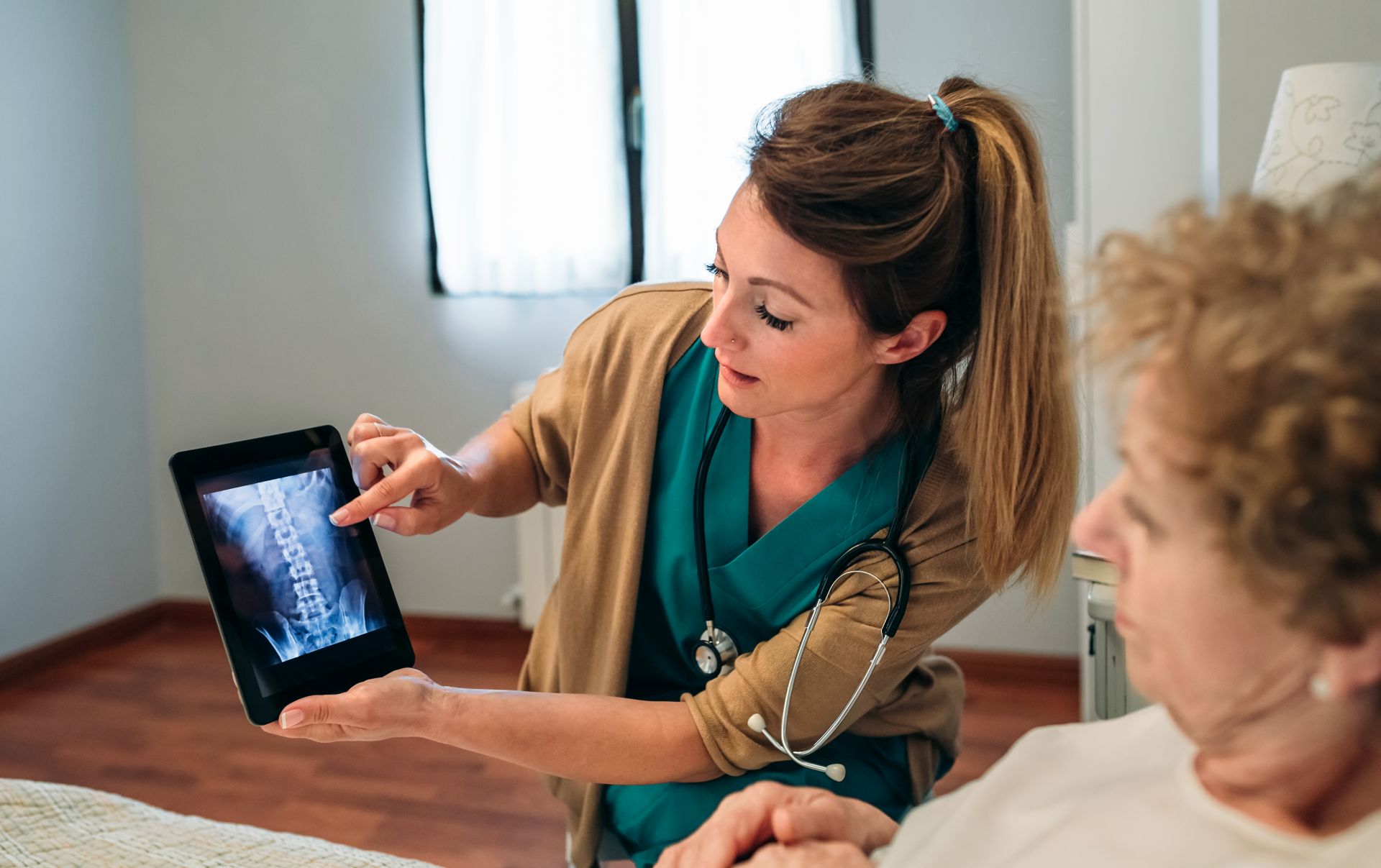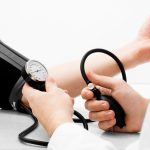
Key facts
- A bone density scan is a medical test used to help identify low bone density and diagnose osteoporosis.
- Osteoporosis is a disease characterised by low bone density and the weakening of the building blocks that make up your bones.
- People living with osteoporosis have porous, fragile bones, which can lead to an increased risk of fractures (broken bones).
- If you have higher-than-average risk factors for osteoporosis (for example, older age, various medical conditions and long term use of certain medicines) your doctor might refer you for a bone density scan.
- Bone density scans are widely accessible, painless, are often covered by Medicare and involve minimal levels of radiation.
What is a bone density scan?
A bone density scan is a medical test used to help diagnose osteoporosis. Bone density scans are also used to help see whether your risk of developing osteoporosis in the future is higher than average.
Osteoporosis is a disease in which low bone density is a key symptom. Low bone density happens when the building blocks that make your bone tissue become weaker over time. As a result, people living with osteoporosis have porous, fragile bones, leading to an increased risk of bone fractures (broken bones).
A bone density scan is also known as a bone density test, a bone mineral density test or by its medical name, a DXA test.
How does a bone density scan measure my bone strength?
A bone density scan is done using a special type of x-ray called a dual energy x-ray (DXA). The DXA measures bone mineral density. The scan gives you and your doctors information about your bone strength or fragility (weakness), and your risk of fractures. In general, the lower your bone density, the higher your risk of having broken bones in the future.
Do I need a bone density scan?
If you are at risk of getting osteoporosis, your doctor will refer you for a bone density scan. People with an average risk of getting osteoporosis include post-menopausal females aged 45 years and and males over 50 years.
People with a high risk of osteoporosis include males over the age of 60 years and females over the age of 50 years who also:
- have a family history of a fragility fracture
- smoke or have a high alcohol intake
- have vitamin D deficiency
- have low body weight
- have recurrent falls
- are immobile (cannot walk or do housework without help) or have low levels of physical activity
Some medical conditions can also put you at an increased risk of developing osteoporosis. If you have one of these conditions, your doctor may refer you for a bone density scan.
Health conditions include:
- endocrine (hormone) disorders
- early menopause
- anorexia nervosa
- inflammatory conditions and conditions causing malabsorption (problems in your digestive tract or gut)
- chronic kidney or liver disease
- diabetes
- HIV
Taking certain medicines can also increase your risk of osteoporosis, so if you take one of the following medicines, your doctor may refer you for a bone density scan to check your bone health. These include:
- corticosteroids
- medicines for epilepsy
- anti-androgen medicines or aromatase inhibitors (these are both types of hormone therapy)
- high doses of thyroxine (for thyroid problems)
- some antidepressant medicines
Your doctor will review all factors and assess your overall fracture risk. If you have already had a fracture, and based on your other risk factors, your doctor will work out if your risk of more fractures is higher than average. If you are, you will most likely be referred for a bone density scan.
For example, if you are over 45 years of age, and have broken a bone after a minor fall or incident (known as a ‘low-trauma fracture’), if you are a female who has gone through menopause or if you are an older male who has had a vertebral fracture (a break to one of the bones in your spine), you will likely need a bone density scan.
What happens during a bone density scan?
A bone density scan will usually take about 15 to 30 minutes and involves measuring the bone mineral density in your lumbar spine (the lower part of your back), hip and sometimes your forearm. Scanning your hip and spine is the best way to assess your risk of fractures in these areas and your general bone density.
During the test you will need to lie on a flat padded table while the arm of the DXA machine passes over your body. The test does not hurt; you may not feel anything at all. The radiation exposure of this test is very low.
You do not need to get undressed during the test, but you should wear loose fitting clothing. Ensure your clothing has no metal parts, such as fasteners or items in your pockets. Do not wear metal jewellery.
Results of the test will be sent to your doctor. After getting the results of your test, your doctor will tell you what treatment, if any, is recommended. If you have osteoporosis, you may need treatment with osteoporosis medicines. Your doctor may also discuss your lifestyle with you, with a particular focus on how much vitamin D, calcium and exercise you need.
What do the results of my bone density scan mean?
The result of your bone density scan is usually presented as a score called a ‘T- score’. A T- score of -1 or above is normal. A score between -1 and -2.5 means you have lower than normal bone density (osteopenia), and you may develop osteoporosis in the future. A T- score of -2.5 or below means you already have osteoporosis.
The results of your bone density scan and the scores you get will help your doctor understand your risk of having a bone fracture in the future. Based on this, they will decide what treatment is right for you to help you protect your bones.
Your doctor can use your T- score, and other information to help determine your overall risk of having a fragility fracture in general (that is, a broken bone from a minor fall), or a hip fracture in particular. This information includes:
- the number of falls you’ve had over the last year
- the number of fractures you’ve had since the age of 50 years
- your age
- your sex
If you have a higher-than-average risk of having a fracture, your doctor may prescribe you medicine for osteoporosis.
What does a bone density scan cost?
Many people are eligible for a Medicare rebate for their bone density scan.
Medicare rebates for bone density scans apply to people:
- already diagnosed with osteoporosis
- with a past fracture from a minor incident or minor fall
- using corticosteroids
- with early menopause or low testosterone
- with one of the following medical conditions: coeliac, overactive thyroid, parathyroid conditions, rheumatoid arthritis or liver or kidney disease
- aged 70 years or over
Where rebates don’t apply, you will need to pay the full amount themselves.
If you are eligible for a Medicare rebate for a bone density scan, you may repeat the test every 12 to 24 months to monitor your progress. Your doctor will tell you how often you will need to repeat the test.
How can I get my bone density checked?
You will need your doctor or specialist to refer you for a test. The doctor will assess your risk factors for osteoporosis and decide if you need to be tested. Bone density scans are widely available through most medical imaging providers (where x-rays and ultrasounds are also available), radiology centres, public hospitals and some specialist practices. Some rural areas also have a mobile bone density testing service, making this service accessible to people living in rural and regional areas.


